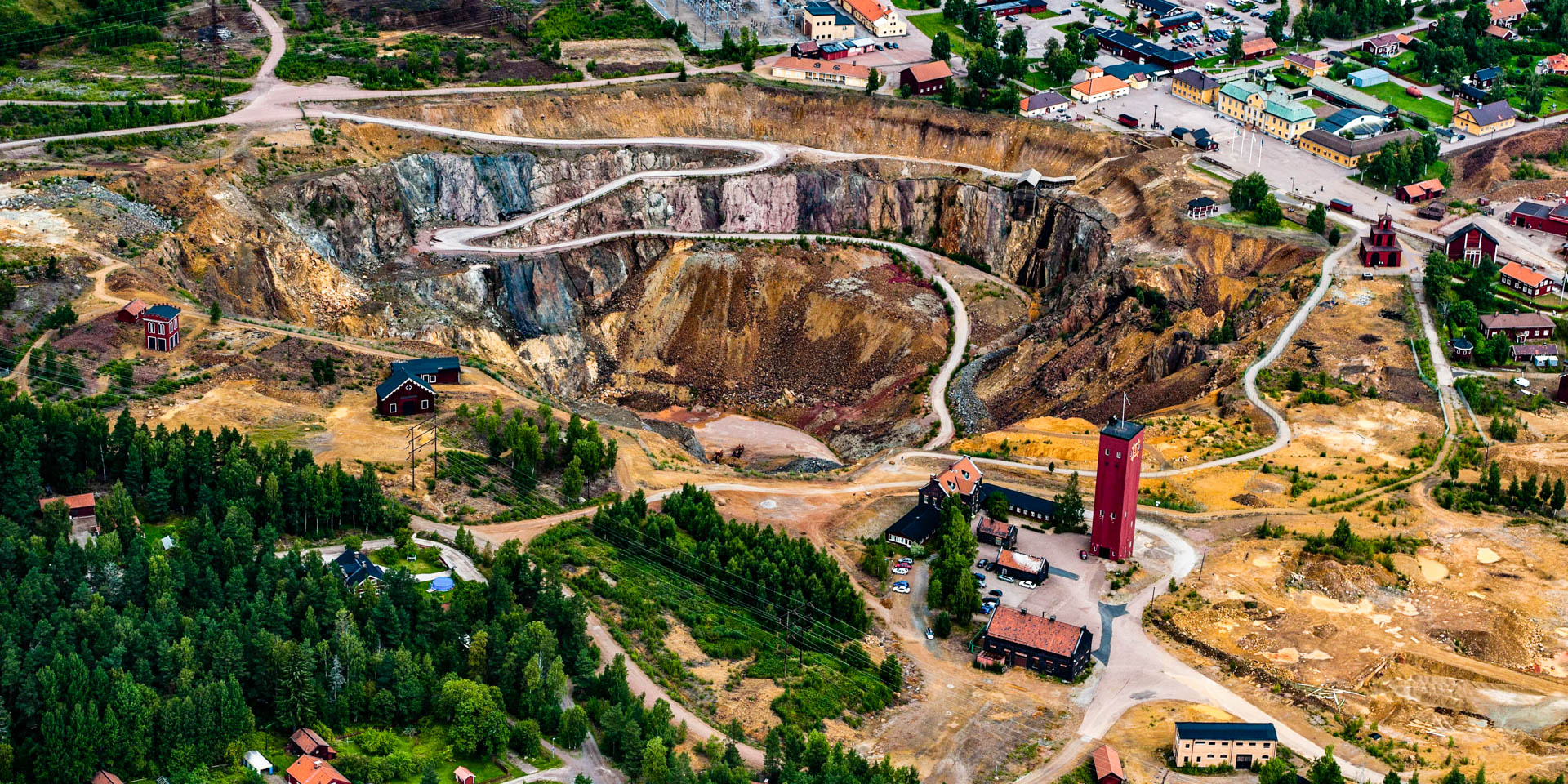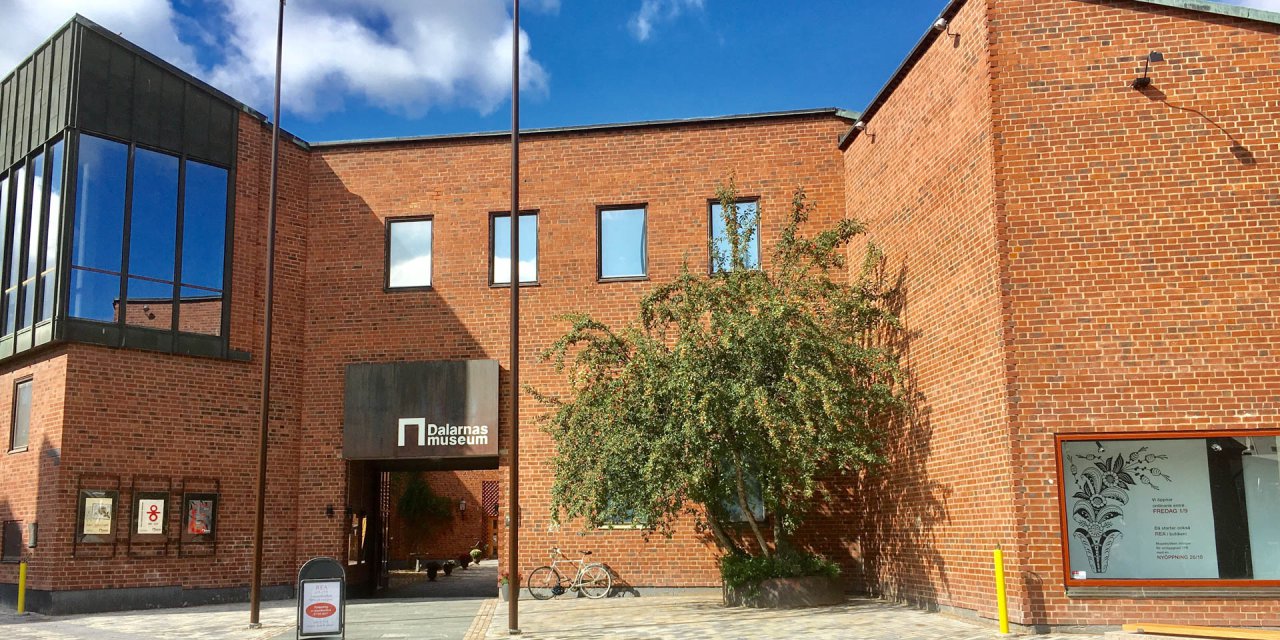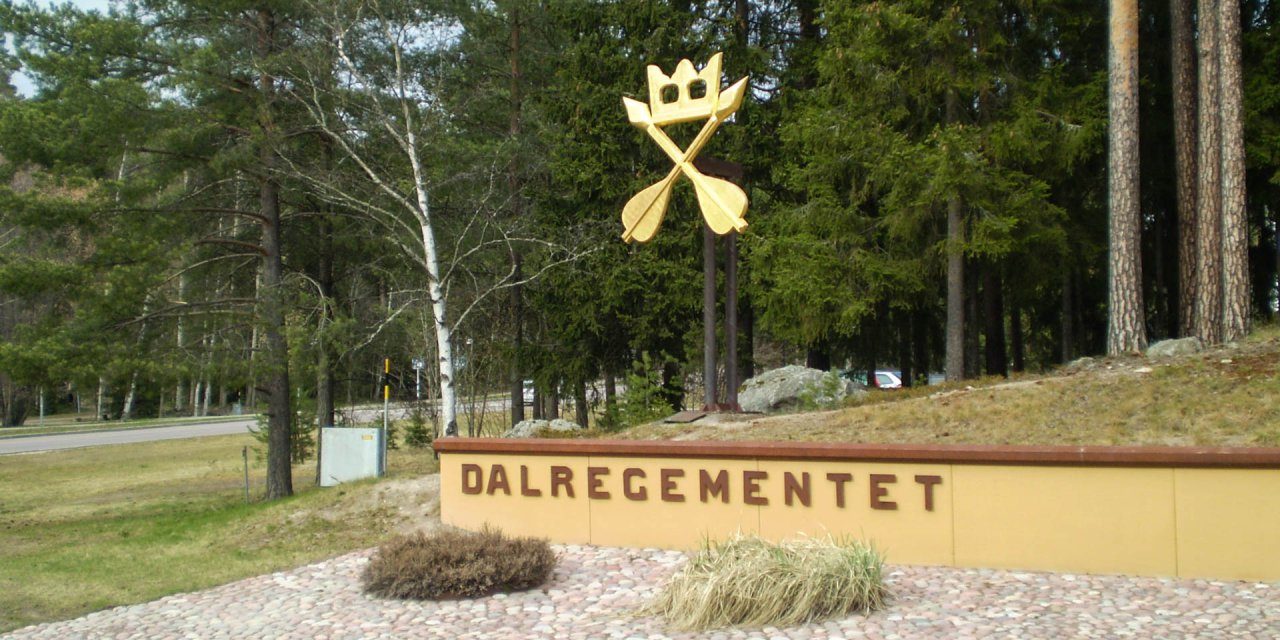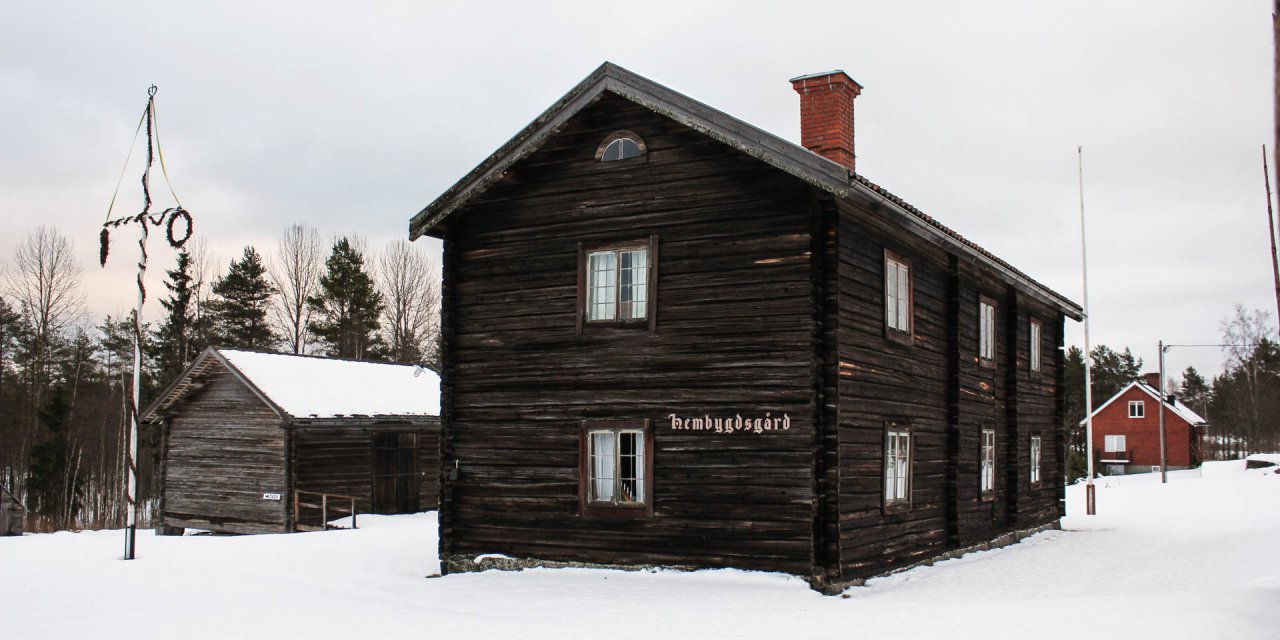

Falu Gruva
Historic mine in Falun
Falu Gruva was once the largest copper mine of its time and is now UNESCO World Heritage Site, museum and the most visited tourist attraction in the municipality of Falu Kommun and in the whole of Dalarna.
Copper mining began as early as the 9th century in the mountain that is known today as Stora Kopparberget, the Great Copper Mountain. The mine was first mentioned in a document in 1288 and continued to grow steadily until its heyday in the 17th century. At that time, around 1,000 workers were labouring in the mine shafts, making Falu Gruva Sweden's largest workplace. Two-thirds of Europe's copper production at the time was made at this site, and at the same time the mine was Sweden's largest producer of gold and silver, making the region Sweden's most important industrial area.
Falu Gruva becomes a museum
A small part of the mine was opened to the public as early as 1970. A lift has taken visitors to a shaft 67 metres below ground ever since. On December 8, 1992, ore mining in the mine finally ceased and on December 31, 2001, Falu Gruva and the surrounding area with the town of Falun were declared a UNESCO World Heritage Site.
Today's Gruvmuseet, the mining museum, is part of the World Heritage Site and presents the history of mining. The collection of objects began as early as the 1890s and the museum is considered Sweden's first technical museum. In 2017, the museum was redesigned and offers many interactive elements that are also exciting for children. During your visit, you will get a good insight into how it probably felt to work in the mine back then.
In addition to the museum, you will also find the World Heritage Visitor Centre on the mine site, as well as a restaurant and café for refreshments in between.
Descending the mine
The tour of the accessible mine shaft is probably the highlight of the visit for most visitors. The guided tour takes you down a total of 400 steps and a lift into the 67-metre-deep shaft. Once there, you'll need the right clothes, because the ground is not only muddy, but also the temperature is only a cool 5° Celsius. You can borrow protective helmets and rain capes on site.
Visiting the shaft is unfortunately not possible for people with a walking disability. The minimum age is also 3 years. But even if you don't go down the shaft, Falu Gruva offers an impressive experience. The unmissable pit to the east of the museum, Stora Stöten, can be seen from various vantage points. With a diameter of 1.6 kilometres and a depth of 95 metres, it is hard to imagine that it was formed merely by the collapse of some parts of the mine. This collapse, which occurred on Midsommar of 1687, is still known today because the mine was empty at that time due to the holiday and not a single person lost their life, and of course because an immense hole remained.
The origin of the falu red & the Falukorv
At the sight of a red wooden house, most people think directly of Sweden. Faluröd, known as falu red, is a colour that only became popular in the 16th century. The typical red comes from pigments made from the overburden of copper mining - today the only industrial product that is still produced in the Falu Gruva.
In the beginning, mainly wealthy homeowners in the region used the colour to paint their wooden houses to imitate a brick look. From Falun, the image of the red wooden houses slowly spread in the following centuries. Sweden's probably best-known painter Carl Larsson (1853 – 1919), who lived in his house Lilla Hyttnäs in Sundborn, only 13 kilometres away, helped the colour to its final breakthrough with his paintings. By the end of the 19th century, falu red was represented in all social classes and regions of Sweden. The paint also benefited from its wood-preserving effect and could be used on rough, untreated wood.
A second product, very well-known in Sweden, also owes its existence to the Falu Gruva. The sausage Falukorv originated in the heyday of the copper mine, when countless oxen were slaughtered over a long period of time for the production of needed leather straps. The meat was first cured and smoked to preserve it. The German miners working in the mine in large numbers at that time brought with them knowledge of sausage making, which they shared with their Swedish colleagues. From around the 16th century, the smoked meat was also made into thick sausages - the falukorv was born and has long landed regularly on the plates of Swedes as an integral part of Swedish home cooking.
Falu Gruva: Opening hours & admission
Opening hours
Monday – Friday: 10:00 – 16:00
Monday – Sunday: 10:00 – 17:30
Monday – Sunday: 10:00 – 16:00
Saturday – Sunday: 10:00 – 15:00
Admission
Last update: 06/2022 | Errors and omissions excepted.



